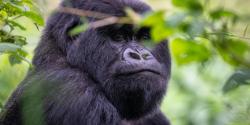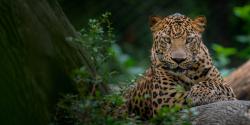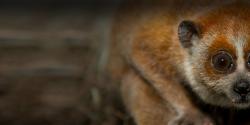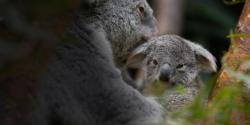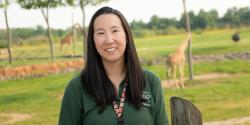How do ratsnakes navigate the Columbus Zoo? Where do they go when no one is looking? And what happens when one shows up inside an aviary or animal barn?
This year, the Columbus Zoo and Aquarium is launching a new research initiative to answer these questions. With support from the Zoo’s Conservation, Education, Shores, and Veterinary teams, we will begin tracking the movements of gray ratsnakes (Pantherophis spiloides), formerly known as black ratsnakes. These are the largest snakes found in central Ohio.
The goal?
To better understand how these reptiles live alongside us — and help people see their world through a snake’s eyes.
Why We’re Studying Ratsnakes and How We’re Doing It
Gray ratsnakes can be surprisingly common in human-modified habitats such as barns, rafters, rock walls, and even animal habitat areas at the Columbus Zoo. While harmless to humans and beneficial as natural rodent predators, their presence can cause concern, especially when they enter guest areas or prey on animals in professional care. Until now, we’ve had very little information on how these snakes use the Zoo’s developed landscape, how far they travel, or how they respond to being relocated. This study aims to provide those answers.
Up to six snakes will be surgically implanted with small radio transmitters by the Zoo’s veterinary team. Three may be located at Columbus City Schools’ Spruce Run Nature Center, allowing us to compare data between snakes in natural forested habitats and those navigating the modified terrain of the Zoo.
Using radiotelemetry, researchers will track the snakes from April through November. The data will help us study differences in movement, habitat use, and behavior in urban versus natural environments.
Guests Can Join the Project!
This project also includes a unique engagement component. In addition to Zoo conservationists and animal care staff, educators and guests may be invited to help with tracking. Imagine a child helping locate a snake in a tree, or a teen hearing a telemetry “ping” for the first time. These hands-on experiences foster empathy for native wildlife in powerful ways.
The research has practical implications as well. By studying how “conflict” snakes — those found in buildings or guest areas — respond to short-distance relocation, we hope to develop science-based guidelines that prioritize animal wellbeing, staff safety, and our conservation mission. Past studies suggest relocated snakes often return to their original location, an important consideration in Zoo operations.
Researchers will collect data using GPS-enabled iPads running a custom Survey123 app and visualize their findings with ArcGIS dashboards. These tools support seamless collaboration and allow for future analysis. At the end of the study, the team will review habitat preferences, identify potential nest and overwintering sites, and evaluate movement patterns that can guide Zoo policy moving forward.
A Local Mission with a Global Meaning
This project reflects the Columbus Zoo’s commitment to conservation science — not only in distant rainforests and oceans, but right here in our own backyard. By studying native species and engaging in our community, we aim to replace fear with fascination, and conflict with coexistence.
Let’s work together to better understand the wildlife living among us — and share their story with every guest who walks through our gates.

